STUMP Classics: How Reliable Are Lottery Revenues?
Not reliable enough in NJ to fund pensions, that's for sure
Back in 2017, New Jersey decided to make the state lottery an “asset” for the pension plans.
As noted in yesterday’s post, it looks like the NJ Lottery took a hit, just as New Jersey needs more money for the pensions. [Hmm, ain’t that the way.]
So let me revisit my post on state lottery revenues from 2017. I’m heavily editing from the original [skipping a data quality discussion], and then adding some new data to see if my conclusions are any different now.
New Jersey lottery proceeds
Here is my graph of revenues, and “profits” once prizes and expenses are removed (just for New Jersey). Sorry, this one isn’t labeled — $ are in millions, so the graph ends up a little under $850 million in 2015.
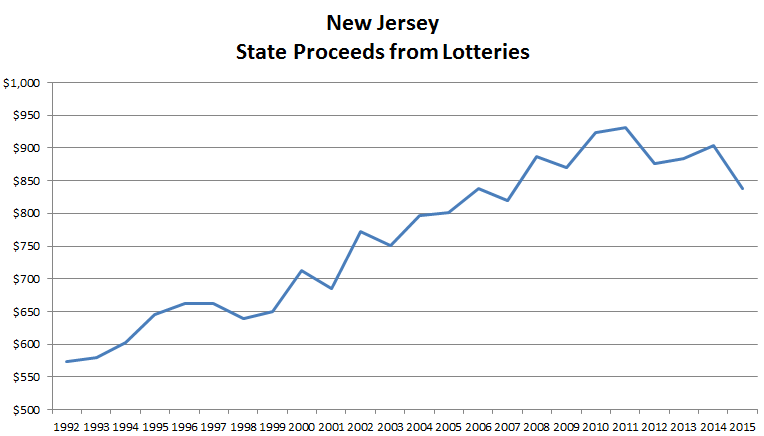
Hmmm. Not enough sizzle.
I know — let’s put on a linear trend!
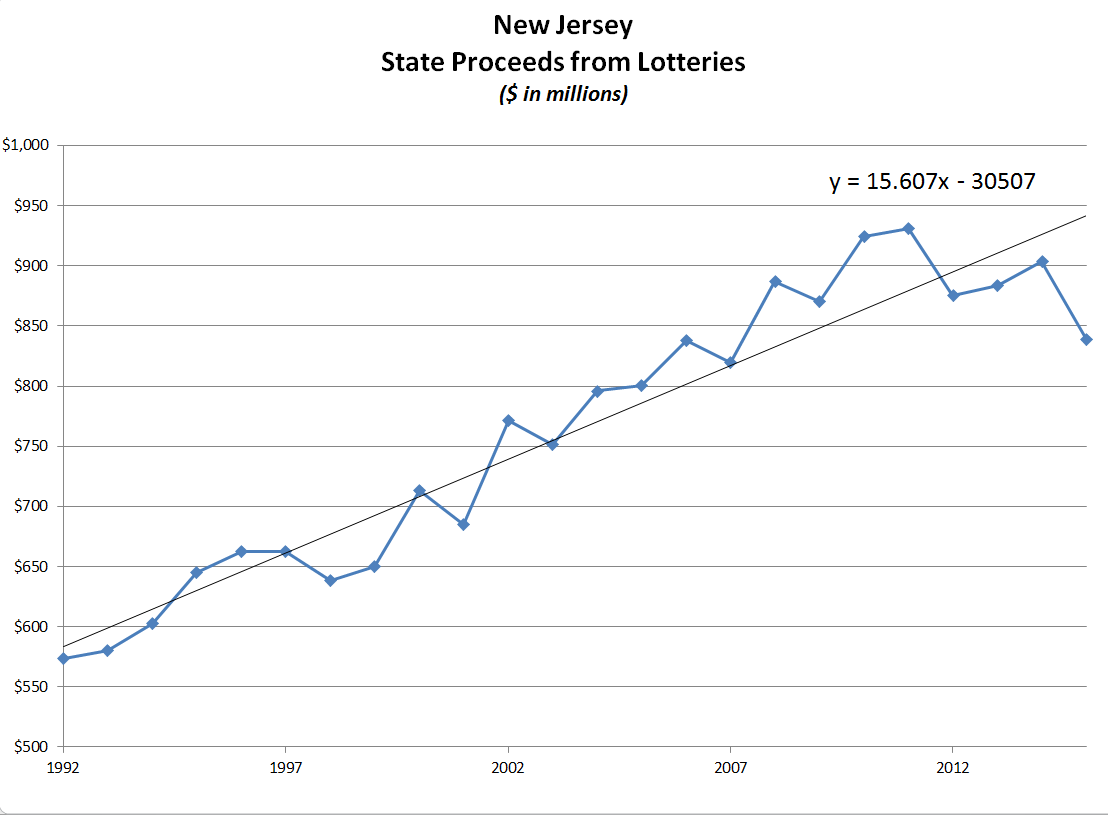
Ooooh, ever upward!
But hold on — looks like the proceeds actually may have peaked out in 2012, and are coming down.
Let me slap a few extra trends on there:

So I have a question: when they valued the lottery as an “asset” for the pension plan, did they assume that it would always keep growing? Linearly? Exponentially (same as constant % per year)?
I’m going to guess they didn’t fit a cubic.
There are a few other projections that may also make sense, assuming saturation of the lottery demand — cubic doesn’t really work, but something like a logistic function would probably be good.
(The reason I used exponential and cubic was because they’re built into Excel. I’m not going to do a huge amount of work here.)
National lottery trends
Here’s the deal — I grabbed more than just New Jersey data.
Let’s look at the proceeds for the entire United States over time.
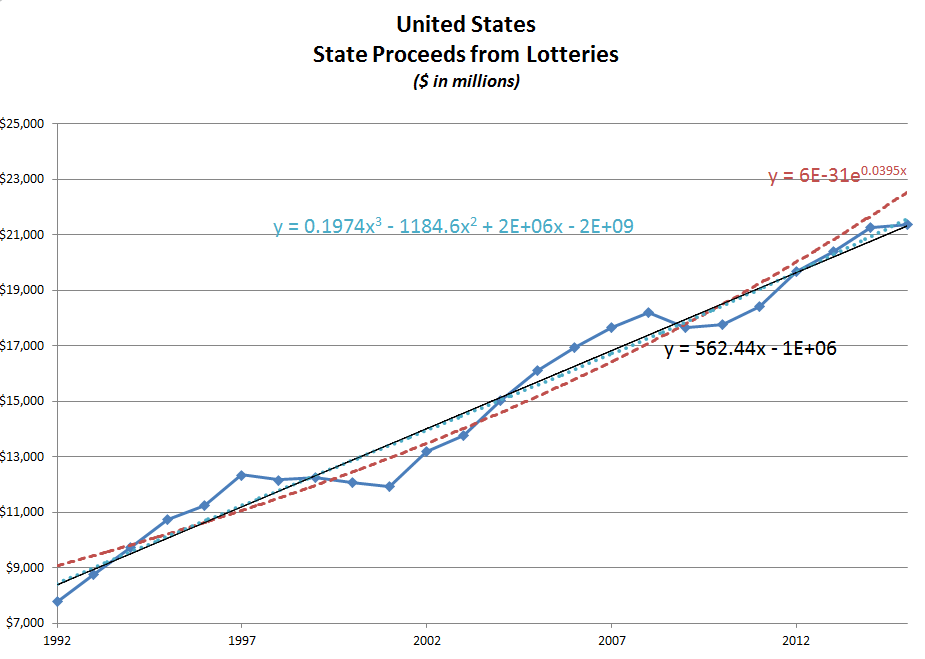
That’s a stronger positive trend. I calculated the CAGR (compound annual growth rate), and it was 4.5% per year for the period of 1992 – 2015.
New Jersey had a CAGR of 1.7%… that’s pretty weak.
But hey, let’s check it out — I’ve got all the states in the file. Some of them didn’t have lotteries at all, and some of them didn’t have lotteries in 1992, so I will restrict it to states that had lotteries the entire period. I highlighted a few neighboring states to New Jersey.
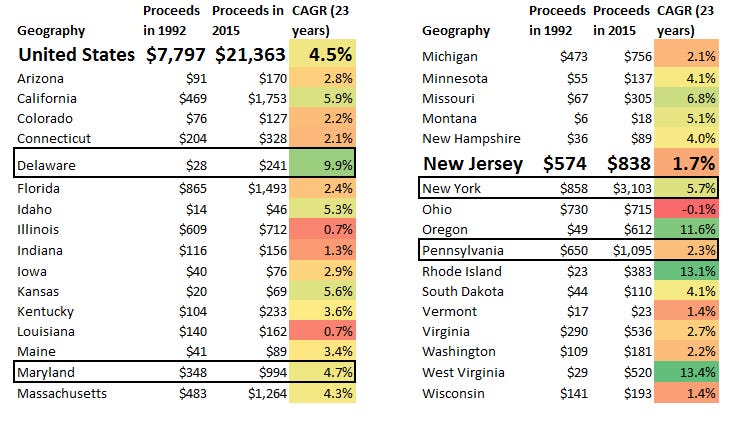
WOOOOT! NEW YORK! Let’s check out New York proceeds:
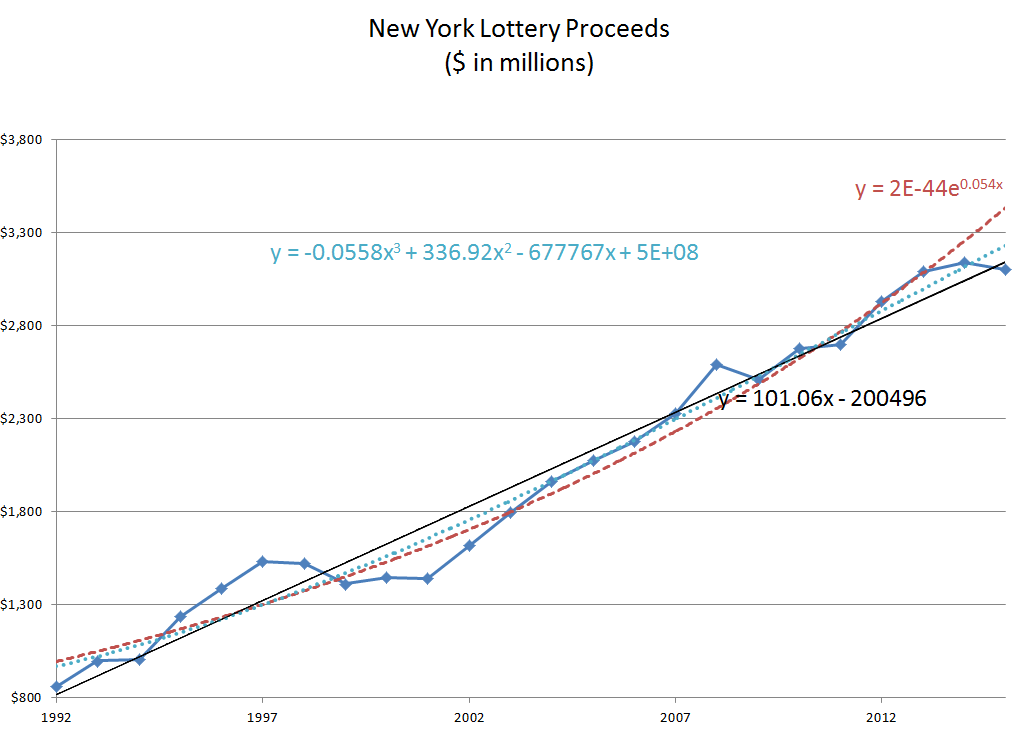
But also note Delaware. Much faster growth, but it is growing from a smaller base. And if we look at the graph:

If I were Delaware, I wouldn’t be assuming linear growth.
Data sources and data quality
Back in 2017, I found the data at this link: https://www.census.gov/govs/state/, which is no longer active. That said, I captured the data at the time, and found other sources — ultimately, it comes from the U.S. Census Bureau, which does a census of all sorts of state and local government revenues.
The spreadsheet I made that did all the graphs in 2017 is here. It has macros in it — what the macros are needed for is to update graph titles and axes when you choose different states to graph. The spreadsheet will still work without the macros; it’s just the graphs will be mislabeled and the axes may need to be adjusted manually.
I have now a new spreadsheet: the spreadsheet covering 1992-2018 can be found here, and I got data covering 2012 through 2018 via data.census.gov.
Updated New Jersey lottery proceeds
In the old post seen above, NJ lottery proceeds had been moribund for a few years, which hit its growth rate. New York, on the other hand, had steady growth.
Well, this is what NJ lottery proceeds did once we add on three more years of experience:
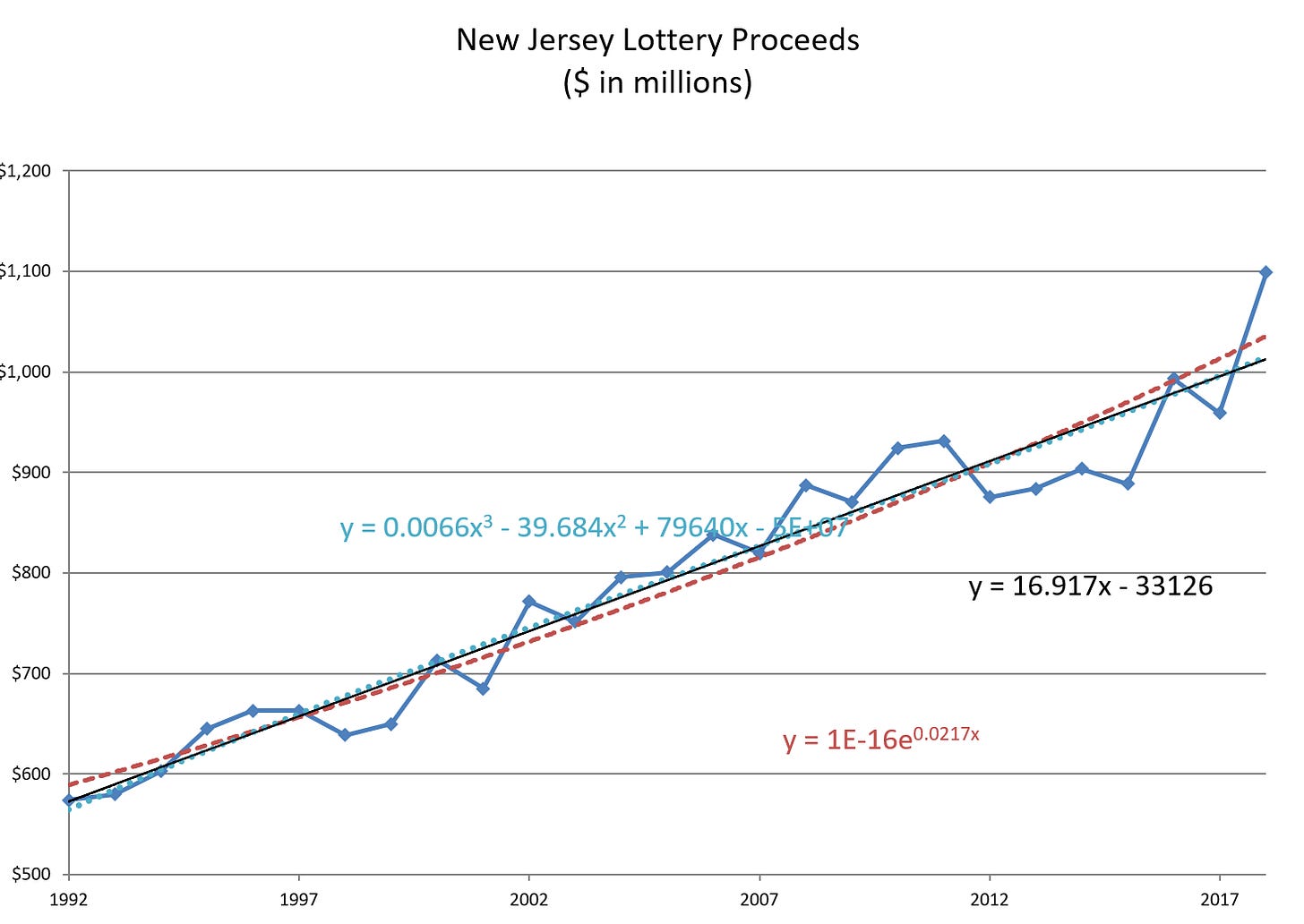
Ah, so now we have a strong growth trend… or, a high volatility trend.
Here are the 26-year growth rates for the states:
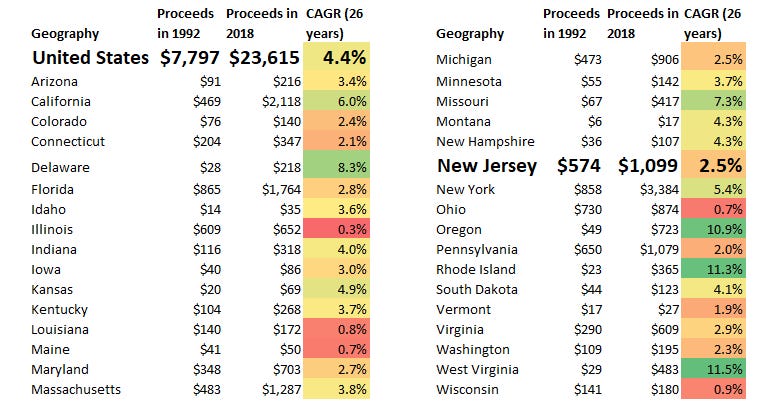
As before, New Jersey is well below the national trend.
But my main point is that proceeds from the lottery have been very variable for New Jersey, though that’s not true of the U.S. overall.
Treating their state lottery as a reliable asset to fund their pensions was a foolish decision.
However, New Jersey is not necessarily known for its wise decisions when it comes to public finance.



